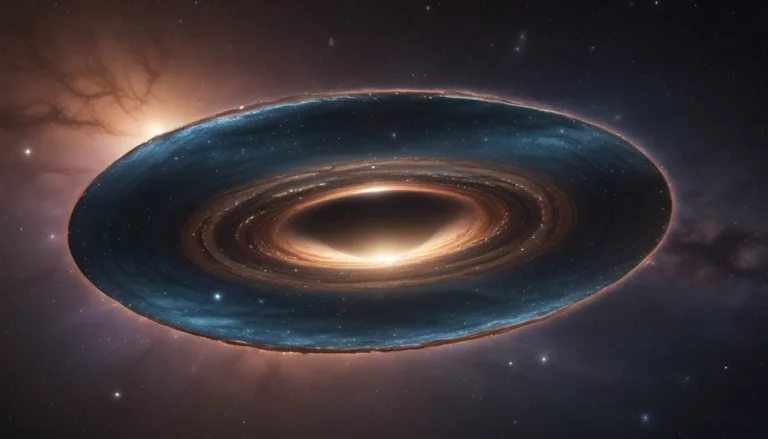The pictures we use in our articles might not show exactly what the words say. We choose these pictures to make you interested in reading more. The pictures work together with the words but don’t take their place. The words still tell you the important facts.
Spacecraft communication systems are the backbone of space exploration, allowing us to venture into the unknown and uncover the secrets of the universe. These systems not only bridge the gap between Earth and spacecraft but also provide valuable data that deepens our understanding of the cosmos. In this article, we will delve into the captivating world of spacecraft communication systems, shedding light on their groundbreaking technology, significance in space exploration, and the challenges they conquer to transmit data from the far reaches of space back to Earth.
The Marvels of Space Communication
Spacecraft communication systems operate at the speed of light, utilizing powerful antennas, and detecting weak signals to enable real-time monitoring and control of missions billions of kilometers away. These systems use radio waves, multiple frequencies, and data compression to ensure continuous contact and reliable transmission, even in the vastness of deep space.
Communication Signals Travel at Light Speed
In the vast expanse of space, communication signals travel at the astounding speed of light, approximately 300,000 kilometers per second. This incredible velocity allows for instantaneous communication between spacecraft and Earth, facilitating real-time monitoring and control of missions.
The Role of Powerful Antennas in Deep Space Communication
Spacecraft exploring the outer edges of our solar system rely on large, highly sensitive antennas to transmit and receive signals over vast distances. These antennas are critical for maintaining communication links with Earth, even when the spacecraft are billions of kilometers away.
Harnessing Radio Waves for Communication
Spacecraft communication systems utilize radio waves for transmitting and receiving information. These electromagnetic waves can easily travel through the vacuum of space, making them ideal for long-distance communication.
Challenges of Communication Delay in Deep Space
Due to the immense distances between Earth and deep space missions, there is a notable delay in communication. Signals can take several minutes to travel between a spacecraft and Earth, posing challenges in real-time decision-making and mission control.
Embracing Different Frequencies for Effective Communication
Spacecraft communication systems employ various frequencies, including X-band, S-band, and Ka-band. Each frequency range offers unique advantages and limitations, such as data transmission rates and susceptibility to interference, tailored to specific mission requirements.
The Importance of Multiple Ground Stations
To maintain constant communication with spacecraft, multiple ground stations are strategically positioned around the globe. These stations work collaboratively to ensure continuous coverage and uninterrupted communication as spacecraft orbit the Earth or traverse space.
Innovative Technologies Driving Communication Systems
Spacecraft communication systems utilize forward error correction (FEC) techniques to enhance data reliability by detecting and correcting errors during transmission. The Deep Space Network (DSN), a network of large antennas worldwide, enables communication with distant probes, ensuring continuous contact for valuable data transmission and mission commands.
Unveiling the Parabolic Dish Antennas
Parabolic dish antennas, also known as parabolic reflector antennas, are widely used in spacecraft communication systems. These antennas focus radio waves into narrow beams, amplifying signal strength for long-range communication with spacecraft.
Detecting Weak Signals in the Depths of Space
Spacecraft communication systems are designed to detect faint signals from distant probes using advanced receiving techniques and signal processing algorithms. These systems extract valuable data from weak transmissions in the vastness of space.
Command and Data Handling at the Core of Communication
Command and Data Handling (C&DH) systems are essential for processing commands sent to spacecraft and managing vast amounts of data collected by onboard instruments. These systems ensure efficient communication and data storage.
Enabling Remote Software Updates for Adaptability
Spacecraft communication systems allow for remote software updates, enabling engineers to send new instructions or patches to onboard systems. This feature ensures spacecraft remain up to date and adaptable to changing mission requirements.
Supporting Voice and Data Transmission
Spacecraft communication systems facilitate voice and data transmission, enabling astronauts aboard the International Space Station to communicate with mission control on Earth and share scientific data collected during their missions.
Tracking and Telemetry for Mission Monitoring
Tracking and telemetry systems are integral to spacecraft communication, providing critical information on the spacecraft's position, velocity, and health status. These systems enable engineers to monitor mission progress and ensure spacecraft safety and success.
Optimizing Communication with Advanced Techniques
Data compression techniques are employed in spacecraft communication systems to optimize the transmission of large data volumes. Compression algorithms reduce data packet size, maximizing communication channel efficiency and minimizing transmission time.
Ensuring Reliability with Redundant Pathways
Spacecraft communication systems incorporate redundant pathways to ensure reliability. Multiple communication links and backup systems are in place to maintain continuous contact, even in the event of malfunctions or interferences, providing essential redundancy for critical space missions.
Concluding Remarks
In conclusion, spacecraft communication systems are marvels of engineering and technology that enable us to explore the vastness of space with unprecedented clarity. From radio waves to laser beams, these systems pave the way for seamless data transmission across vast distances. As we venture further into the cosmos, the evolution of spacecraft communication systems will continue to play a pivotal role in unraveling the mysteries of the universe.
Frequently Asked Questions
Q: How do spacecraft communicate with Earth?
A: Spacecraft communicate with Earth using radio waves transmitted through antennas and receivers as part of the spacecraft's communication system.
Q: What is a deep space network?
A: A deep space network consists of antennas and communication facilities worldwide that enable continuous communication with spacecraft exploring the outer reaches of space.
Q: How far can spacecraft communication systems reach?
A: The reach of spacecraft communication systems varies based on transmission power and receiver sensitivity. Currently, we can communicate with spacecraft billions of miles away from Earth.
Q: How do spacecraft overcome signal degradation over long distances?
A: Spacecraft communication systems use error correction coding and signal amplification techniques to counter signal degradation, ensuring the integrity and clarity of transmitted data.
Q: What challenges do spacecraft communication systems face?
A: Challenges such as signal interference, background noise, and limited bandwidth are encountered by spacecraft communication systems. Ongoing advancements aim to enhance these systems and improve communication capabilities.
Exploring the wonders of spacecraft communication systems reveals the intricate technologies and innovations that drive space exploration forward. With each transmission, we uncover new insights about the universe and pave the way for unprecedented discoveries beyond our planet's boundaries. As we continue to push the boundaries of space exploration, the resilient and sophisticated nature of spacecraft communication systems will remain vital in shaping our cosmic journey. Join us in celebrating the marvels of space communication technology and the limitless possibilities it holds for the future of space exploration.






